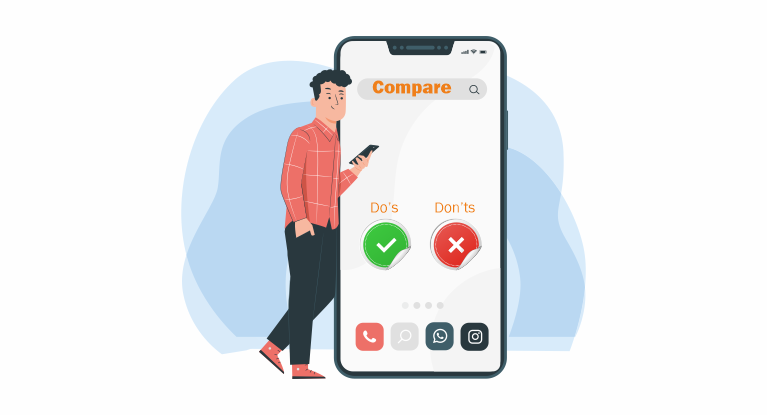What is Call Center Management? Best Practices & Strategies

8 min read
Table of Contents
Intro: What is A Call Center?
A call center acts as the intermediary communication channel between a business and its customers. Its main function is to resolve customer issues. The traditional call center has evolved over the period into the modern contact center.
It supports multiple channels: phone, email, chat, and social media. While phone calls are still the base, contact centers now allow customers to reach them through whichever channel feels most natural to them.
Customer representatives ( often called call center agents ) take on the responsibility of resolving issues quickly and professionally. In a true omnichannel environment, agents have access to a customer’s full interaction history, irrespective of the channel of communication. That continuity allows personalized service and better customer satisfaction.
Want to upgrade your communication channels? Discover how Vitel Global’s cloud communication solutions can unify your customer interactions. Talk to an expert now!
What is Call Center Management?
Call center management performs daily activities or tasks, from employee training to handling customer requests, and scheduling shifts. It ensures sales and support goals are met. Effective contact center management handles operations like:
- workforce scheduling
- technology use
- performance monitoring
Modern call centers rely on workforce management tools powered by AI. These tools use past data to forecast staffing needs, making sure agents are available when call volume peaks. It results in better resource allocation and stronger service quality.
Common channels that call centers use to connect with customers include:
- SMS
- WhatsApp messages
- Phone
- Website chat
- Video
Call center management techniques must keep these channels optimized and aligned to meet rising customer expectations. Recognition and coaching help in motivating agents. It improves their performance and builds a better engaged workforce.
The main goal is to achieve 100% customer satisfaction. To achieve that, managers focus on-
refining their call center processes
setting the right metrics
adjusting to changing customer expectations
Average Handle Time (AHT)
Average Handle Time is the average time taken to fully resolve a customer call. Tracking AHT is important for operational efficiency and service quality. It includes
- total talk time
- customer wait time
- follow-up time
Looking to optimize your call center operations? Explore Vitel Global’s business phone systems designed to enhance efficiency and customer satisfaction. Contact our sales team now!
Call Center Team Structure
A well-structured call center team is the foundation of effective call center management. Typically, the structure looks like this:
- A call center manager at the top
- Call center supervisors guiding smaller groups
- Call center agents work directly with customers
Each role matters. Together, they ensure smooth operations and high-quality customer service.
The call center manager sets the vision, oversees operations, and ensures goals are met. Supervisors serve as the link between leadership and agents. They coach, give feedback, and handle escalations. Agents are on the frontlines who-
- answer customer inquiries
- resolve issues
- represent the company’s voice
Agents can deliver better customer experiences if they are provided with a strong knowledge base and ongoing training. This training should cover both product expertise and soft skills ( like empathy and communication ).
Defining clear roles and transparent communication are very important for successful call center management. The center works efficiently when everyone knows their role and how they contribute to the organization. Regular quality assurance reviews keep services consistent and provide coaching opportunities to improve agent performance afterwards.
Call Center Manager Responsibilities
The role of a call center manager goes far beyond daily management. They are important for the call center’s success. Their responsibilities are-
- setting performance goals
- managing budgets
- rolling out strategies that improve both customer satisfaction and agent productivity
A call center manager stays updated with “ industry trends, new tools, and best practices ”. They work to balance the requirements of the customers, agents, and the organization.
Data-driven insights allow them to “ monitor performance, identify gaps, and improve operations ”. With advanced call center software and AI-powered quality assurance, managers can monitor-
- All inbound and outbound calls
- track agent performance
- quickly spot areas that need improvement
This ensures service quality remains consistently high. Thus, the center manager’s ability to lead, motivate, and support the team directly changes the overall customer experience.
A manager who promotes a culture of excellence can-
- improve agent morale
- drive productivity
- increase customer satisfaction
- helps in the business growth
Finding The Right Candidates
For any call center to succeed, hiring the right people is very important. A good candidate should have-
- excellent communication skills
- Patience and good behavior
- a positive attitude
- ability to handle customers
- basic understanding of the company’s products or services
Supervisors/call center leaders are the first people who recognize potential talent. Their role in spotting and mentoring new talent is essential to building a strong team. During recruitment, priority is given to
- Listening skills
- Empathy
- The ability to stay calm with challenging customers
The end ot end recruitment process is managed by the contact center managers generally. They also ensure that agent training is structured, persistent, and mixed into daily operations. If smart hiring is combined with effective onboarding, it reduces turnover, lowers training costs, and speeds up the time it takes for new hires to become productive.
Agent Training And Continuous Learning
Recruitment is only step one. The real work begins with training. Proper training programs equip agents with the knowledge and confidence to perform well. But training is an ongoing process even after onboarding. Continuous learning keeps skills sharp. It helps agents adapt to new technologies, customer service trends, and compliance requirements.
Workforce management tools are used to
- Schedule training sessions
- Track the progress of the task
- Measure outcomes/results
These tools help every agent evolve at a continued pace while maintaining performance standards. In practice, it can be achieved using product refreshers, soft-skills workshops, and compliance updates delivered throughout the year.
Encourage Your Employees
Build the employee’s morale by organizing fun activities, contests, or team-building exercises. These little breaks from routine help reset energy levels and fight boredom that comes due to repetitive shifts.
Performance monitoring plays a role here, too. Managers can encourage and coach by identifying where employees excel and where they need help. When employees feel recognized, their motivation naturally rises.
One-on-one sessions and open team discussions give agents a chance to express challenges they face with customers. These conversations not only solve problems faster but also provide valuable insights into customer sentiment. That feedback is essential to enhance both agent satisfaction and service quality.
Mutual Co-Operation
Successful center management hinges on trust and cooperation between administration and employees. The entire operation feels more balanced when managers and staff maintain open communication. That kind of mutual respect results in
- higher job satisfaction
- stronger teamwork
- better service quality
Defined Times
Employers must estimate the number of agents required to handle the average call volume and identify peak hours: daily, monthly, and even annually.
Workforce management tools are essential in this identification. They help schedule agents in shifts that balance workloads evenly. Shift Rotations prevent burnout. It ensures that not a single agent is burdened with long hours or heavy call queues. If the time is defined for each agent-
- It improves service quality
- shortens customer wait times
- keeps morale steady
Monitoring
Call center supervisors and managers also need to keep a close eye on how agents handle customer calls. Monitoring is more than a box-ticking exercise; it’s about understanding tone, empathy, and problem-solving skills during real interactions.
Reports generated from this monitoring feed into performance reviews and incentive programs. They highlight who deserves recognition and where coaching is needed. By staying consistent with monitoring, managers can fine-tune both agent performance and overall center operations.
Conduct a Survey For Customer Satisfaction
Conducting surveys through channels like email, chat, SMS, or phone calls helps in getting direct customer feedback.
These surveys are more than just a measure of satisfaction. They provide valuable customer data that can be used to refine processes and marketing. If feedback suggests the company image is slipping or product support is lagging, managers can act quickly to correct that. Collecting customer feedback consistently ensures service quality doesn’t drop over time.
Modernized Technology
Technology is transforming call center operations at lightning speed. New systems are built to handle high call volumes, route incoming calls intelligently, and resolve more inquiries without human intervention.
AI-driven chatbots now manage routine customer inquiries and repetitive tasks, freeing agents to focus on complex cases. Self-service options are increasingly popular, giving customers the ability to solve problems themselves and reducing overall call volume.
Automation is another major upgrade. From generating call transcripts to providing meeting summaries, AI tools help streamline processes and improve service quality. In short, modern technology doesn’t replace agents, it enhances their ability to deliver exceptional customer service.
Transform your call center with Vitel Global’s VoIP business phone systems. Experience smarter routing and enhanced productivity. Request a free demo today!
Call Center Data Analysis
Call center data analysis sits at the heart of effective call center management. If properly analyzed, every call, chat, and email generates valuable data. These data display patterns and opportunities for improvement in the future.
Managers use this data to
- Track the agent performance
- Evaluate customer sentiments/satisfaction
- Refine call center operations
Common key performance indicators (KPIs) include “ first call resolution, average handle time, and customer satisfaction scores ”.
Advanced analytics and AI offer even more. They
- predict customer behavior
- personalize experiences
- optimize workforce allocation
By relying on data-driven insights, managers can shift from reactive problem-solving to proactive strategy.
Call centers deliver exceptional customer experiences if they consistently analyze and act on their data. They can improve operational efficiency and agent performance. This results in strengthening their reputation in the call center industry.
Maintain Backups
Every call center should keep a secure backup of customer call records. These archives aren’t just for compliance; they’re practical tools. Past interactions hold valuable details such as addresses, phone numbers, and prior issues resolved. Having this information at hand makes follow-ups more efficient and supports smoother customer interactions.
Accurate customer data also fuels personalization. When agents can see a history of past inquiries, they can offer more tailored responses. Over time, this builds trust and strengthens customer loyalty.
Customer feedback plays a major role here too. Gathering feedback about agent behavior, whether issues were resolved, and how customers felt during interactions provides insights that can shape better management practices. Listening to that feedback directly impacts call center management progress.
These strategies are particularly valuable for start-up call centers aiming for faster success. By backing up data and continuously learning from customer feedback, even small centers can accelerate growth.
Discover top strategies and best practices: Master Call Center Management
Explore essential strategies and tips
Frequently Asked Questions
1. What is call center management?
Call center management handles daily operations, staff, processes, and technology to make sure customer interactions are handled smoothly. They aim to deliver high-quality customer service and raise overall customer satisfaction.
2. What are the main responsibilities of a call center manager?
A main responsibility of a call center manager is to-
- set performance goals
- manage budgets
- implement strategies
- ensure service quality
- Manage workforce management
- integrate new technologies
- focus on continuous improvement of center operations
2. How does effective call center management improve customer satisfaction?
When agents are trained well, scheduled properly, and supported with the right tools, they resolve issues faster and with more empathy. This leads to quicker resolutions, personalized service, and a better overall customer experience.
3. What role does technology play in call center management?
From routing inbound and outbound calls to automating repetitive tasks, technology simplifies and eases call center operations. AI-powered tools and modern call center software:
- provide insights
- improve agent productivity
- enable self-service options for customers
4. How important is agent training in call center management?
Agent training is essential. Continuous learning keeps agents sharp on products, policies, and customer service techniques. Well-trained agents deliver exceptional service and can handle even complex customer issues effectively.
5. What are common challenges in call center management?
Common challenges in call center management include-
- managing fluctuating call volume
- high turnover
- maintaining service quality
- integrating new technologies
- capturing accurate call center data
Strong workforce management tools and effective strategies help overcome these obstacles.
6. How can call center data analysis benefit call center operations?
Analyzing call center data provides valuable insights into customer behavior and agent performance. These insights help managers optimize resources, improve operational efficiency, and ultimately enhance the customer experience.
7. What is the difference between a call center and a contact center?
A call center mainly handles customer interactions over the phone, both inbound and outbound calls. A contact center covers more ground, supporting email, chat, social media, and even video, creating a fully integrated customer service experience.
8. How do workforce management tools assist in call center operations?
Workforce management tools forecast call volume, schedule agents efficiently, and balance workloads. They reduce burnout, ensure peak periods are well-staffed, and help maintain consistent service quality.
9. Why is collecting customer feedback important in call center management?
Customer feedback reveals both strengths and weaknesses in service delivery. It’s a powerful tool for agent training, process improvement, and even product development. Listening to customers closely leads to stronger loyalty and higher satisfaction.
Published: January 6th, 2022
Subscribe to Our Latest Updates
Get monthly product and feature updates, the latest industry news, and more!








